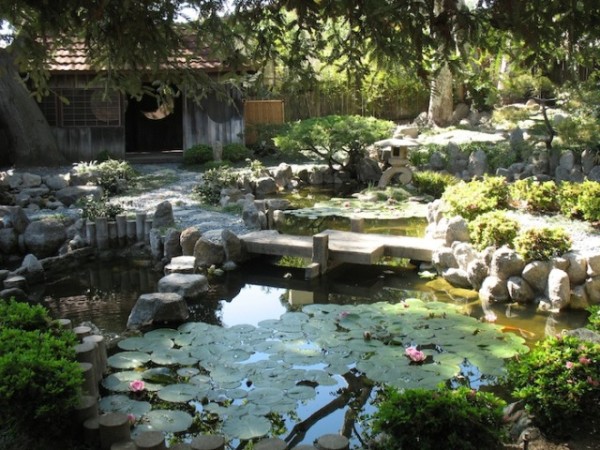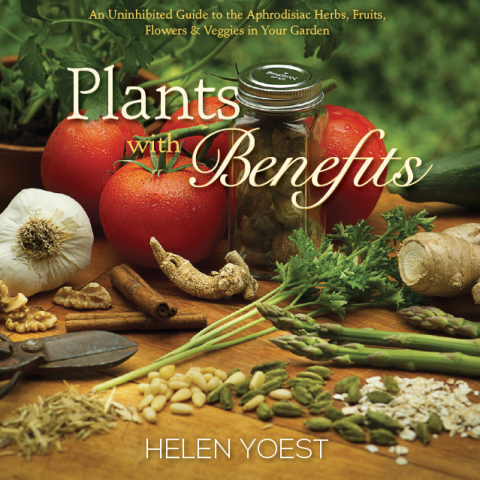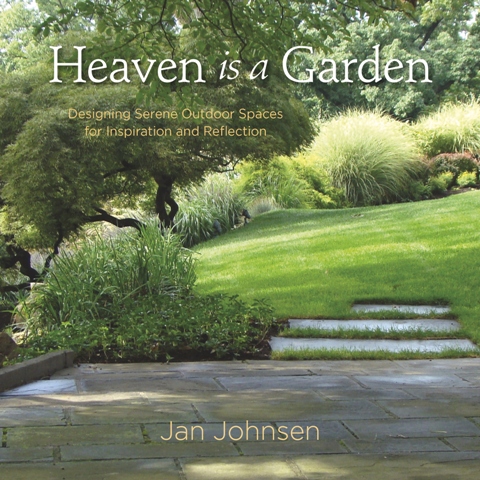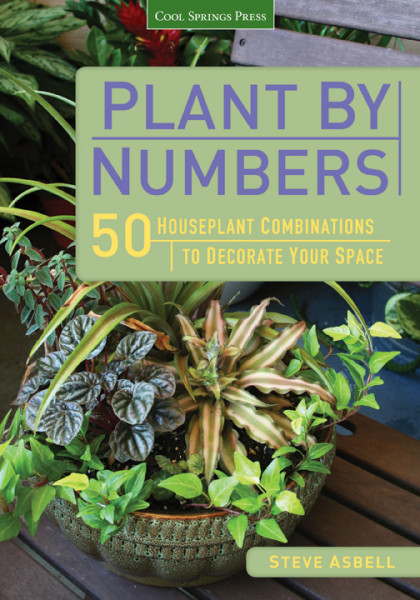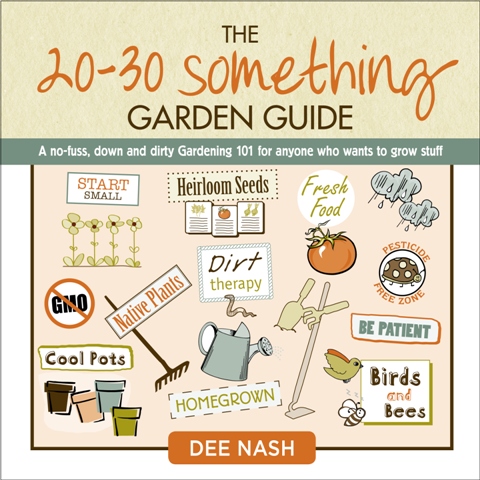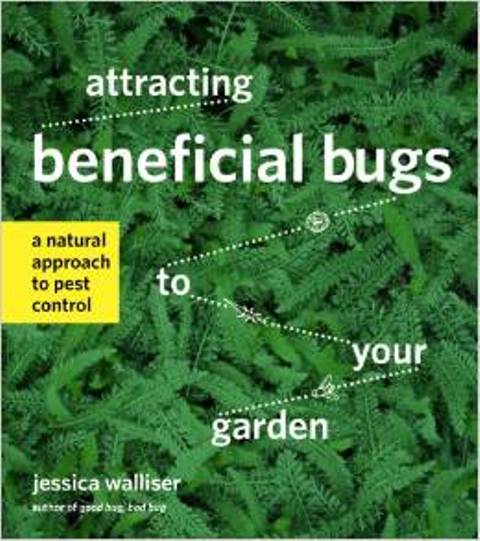With the re-design of Gardening Gone Wild (hope you like it!) and summer just around the corner, it’s time for a celebration!
And what better way to celebrate than to highlight 7 gardening books that have been published in 2014?
In honor of this special event, all 7 authors are generously donating a copy of their book. Instructions on how to participate in the giveaway are listed below. But for right now, sit back and enjoy the personal words of these talented gardeners.
Paradise In Plain Sight: Lessons From A Zen Garden, written by Karen Maezen Miller
“I’d published two books and I was having trouble getting started on my third. As a Zen Buddhist priest, I write about spirituality in everyday life. My first book, Momma Zen, was about the path of early motherhood; the second, Hand Wash Cold, was about making a mindful home. But for the third, I wanted to write something “important” about Buddhism. Boldly ambitious, I made several attempts, each summarily rejected. I thought my writing career was over.
Then a sympathetic friend offered a simple suggestion. “Why don’t you write about the garden?” The idea was obvious. I could suddenly see exactly what the next book would be, and how easy it would come to life. It was already alive, and filled my vision at every turn.
My backyard is southern California’s oldest private Japanese garden, constructed in 1916 by a landscape designer from Japan. The unlikely prospect that a 7,500-square-foot garden — with four ponds, three bridges, two waterfalls and a teahouse — would be hidden in the backyard of a house in suburban Los Angeles is a rich premise for a book. But Paradise in Plain Sight goes beyond any history I can tell, and instead recounts what the garden has told to me: the living wisdom of our natural world. Released from my notion of what an important book should teach, I found instead that the garden already teaches everything. Rocks convey faith, ponds preach stillness, flowers give love, fruit teaches forgiveness, and leaves show how to let go. The garden right in front of me gives the lessons in fearlessness, forgiveness, presence, acceptance, and contentment that form each chapter of the book.
A story about this unique garden might be interesting, but wouldn’t provide lasting benefit, so my purpose was to change the way readers understand the word “paradise.” The secret to doing that is found in the word itself. Its old Persian roots convey its original intent: pairi-, meaning “around,” and diz, “to create (a wall).” Before it became a mythical ideal, paradise meant simply “an enclosed area.” A backyard, if you will, and not just my backyard, but everyone’s.
In the 17 years we’ve lived here, my family and I have made this paradise our own. Now I want readers to find their own paradise in the here and now, on the ground beneath their feet. Then I will have done something worthwhile.” Karen Maezen Miller
Plants With Benefits, written by Helen Yoest
So what was it about the avocado?
Avocados were cultivated in central Mexico almost ten thousand years ago by the early Mayans. These ancient civilizations practiced their version of the Doctrine of Signatures, or the idea that an object’s appearance indicated its use.
The Aztecs dubbed the avocado tree ahuacatl (pronounced ah-hoo-ah-cattle), which literately translates to “testicle”– probably due to the fruit’s tendency to grow and hang in pairs. Since most of us don’t live in the tropical climates needed to grow avocados, we’re not likely to see them as nature intended – and thus reap the added benefit of the power of suggestion.
The avocado’s aphrodisiac reputation was so widely known (and feared) by the Aztecs that parents kept their virgin daughters indoors during the harvest of the “fertility fruit.” In 1672, when King Charles II of England’s personal physician encountered avocados in Jamaica, he wrote “It nourisheth and strengtheneth the body… procuring lust exceedingly.”
Lust aside, the avocado – with its lovely taste and texture – is a popular fruit commonly used in many culinary dishes.” Helen Yoest of Gardening With Confidence
Heaven is a Garden, written by Jan Johnsen
My book, Heaven is a Garden – Designing Serene Outdoor Spaces for Inspiration and Reflection has been a long time in coming and I couldn’t be happier that it is finally published! I have been in the landscape design and horticulture professions for many years and I love to share what I have learned with others. In fact, it was my landscape design students at the New York Botanical Garden and Columbia University that urged me to write a book. They made me realize that what I was sharing with them would be of interest to a wider audience. And so it began…
I worked full time as a landscape designer and I had a child so I had to wait until he went off to college before I embarked on writing ‘the book’. Every morning I would wake up at 5 am and write for about an hour and a half. I would also write on weekends and on vacation. Then I edited and edited some more. I also took the photos. It was quite a project, to say the least.
The inspiration for my book came from my conviction that creating landscapes that make a person ‘feel’ at ease and relaxed is at the core of great garden design. I refer, in the book, to my experience walking into a Japanese garden in Kyoto for the first time and feeling transported. It was this momentous feeling that compelled me to be a landscape designer.
Another inspiration came from Christopher Alexander’s book, ‘A Pattern Language: Towns, Buildings, Construction’. He explored the basis of great design from various historical and common sense perspectives. It was illuminating to read and I used it in my classes to help teach certain landscape design principles. So many great ideas can be gleaned from looking at our ancestors’ practices and gardens.
I combined these 2 inspirations in my book and explained how to create a little bit of heaven in a garden by utilizing historic techniques and understandings. I use many photos to illustrate my ideas. I sincerely hope that my mantra of ‘simplicity, sanctuary and delight’ resonates with others and that Heaven Is A Garden will help readers to create a serene outdoor haven of their own.” Jan Johnsen of Serenity In The Garden
Plant By Numbers, written by Steve Asbell
Plant by Numbers was supposed to just be a spinoff of another book but instead became a totally new way to garden indoors; by choosing compatible houseplants and growing them together in long-lasting living flower arrangements. Cool Springs Press originally contacted me to write a sequel to Barbara Wise’s excellent Container Gardening for all Seasons, which featured 50 container combinations for each time of the year. Mine was to be about combining houseplants, which was exciting to me since I’ve successfully combined houseplants since I started gardening, yet no books existed on the subject and everyone seemed to be under the impression that indoor plants were meant to go solo. To the contrary, it’s actually much easier to grow houseplants when they’re grouped together! If you’re growing a bunch of different plants in their own containers, it becomes a real chore; you’d then have to water, feed and move each plant around individually. Combining compatible houseplants in a single pot makes indoor gardening more enjoyable and rewarding because it emulates the look of a real garden and more importantly, is much less time-consuming. I created 50 combinations for this book and the five I’ve held onto need much less care than my singly potted houseplants. I just won’t go back.
“From the minute I started planning Plant by Numbers, I realized that I was writing this book for every self-proclaimed black thumb who tried gardening indoors and failed. I can’t tell you how many people I’ve met who’ve ‘killed’ a houseplant and mistakenly thought that it was their fault. They may have inherited a dish garden full of plants that have totally different needs and unknowingly rotted the roots because the florist neglected to include a drainage hole, or they might have bought a fern without a care label indicating that it needs lots of water. My book shows newbie gardeners how to purchase healthy plants, combine those that actually work well together and arrange them for both beauty and durability. My motivation was that I could give those ‘plant killers’ another chance to give gardening another shot. It can be pretty devastating to come home to a neglected and subsequently dead peace lily, but if that peace lily were combined in a big pot with prayer plants (Calathea) and pothos (Epipremnum), suddenly your indoor garden has a fighting chance. More soil around the roots keeps the plants moist longer between waterings. If the peace lily dies, then the surviving plants keep up appearances until they either fill in or you decide to replace the plant. The main reason that houspelants do so well in combinations though, is that they’re works of art. You wouldn’t forget to water your own living masterpiece.” Steve Asbell of The Rainforest Garden
The 20-30 Something Garden Guide, written by Dee Nash
“I wrote The 20-30 Something Garden Guide, a no-fuss, down and dirty, Gardening 101 for Anyone who wants to grow stuff because I want to pass on the love of gardening to everyone, and I think the first place to start is vegetable gardening. My children know how to garden because I’ve shown them throughout their lives. However, I noticed their friends didn’t know how, and I want to help them. I spent a lot of money and wasted time on things that don’t work so I want to pass on my hard-won knowledge to the next generation. It’s a great gift for anyone who wants to garden no matter what their age.
Taming Wildflowers, written by Miriam Goldberg
“I wrote Taming Wildflowers to share my passion for the beauty and utility of wildflowers!
Taming Wildflowers tackles a combination of topics not seen in any other gardening book:
– My 60 top recommended wildflowers and native grasses- How to grow them from seed and their specific pollinator partners.
– Easy ways to grow wildflowers from seed by winter sowing outdoors (cold, moist stratification) or in the refrigerator
– Explains the crucial role wildflowers play in keeping our precious pollinators alive and humming and grow beneficial insect populations that protect human food crops.
– How to incorporate wildflowers into any and all forms of gardening – traditional borders, cutting gardens, community gardens, veggie gardens, scree gardens and why it’s so important to do so.
– Eliminates regrettable weeding accidents because I identify the top 60 wildflower seedlings
– And demonstrate how wildflowers make great cut flowers and everlastings; which ones, how long they last in the vase and how to dry and arrange them
– Inspiring and practical examples from three wildly different brides’ DIY wildflower weddings including instructions for wildflower bouquets, boutonnieres and table arrangements.
I want people to appreciate not only how beautiful wildflowers are but how utterly essential they are to help heal the planet. Wildflowers grow pollinator populations and support organic farming because they attract the beneficial insects that function as natural insecticides, protecting human food crops.
I wrote Taming Wildflowers to inspire gardeners to include wildflowers in whatever kind of gardens they grow!!! Their beauty is unsurpassed and their power to heal the planet has no equal.” Miriam Goldberger of Wildflower Farm
Attracting Beneficial Bugs To Your Garden: A Natural Approach To Pest Control written by Jessica Walliser
“Attracting Beneficial Bugs to Your Garden: A Natural Approach to Pest Control is a book about both insects and plants. It is the result of a deep need for gardeners to understand the value of insects to the garden – and to the world – rather than constantly vilifying them. I wanted to write a book that demystifies insects in gardening terms and enables readers to recognize how beneficial insects work, what some of them look like, and how they influence the delicate balance of the garden. The intent of the book is to define the necessary partnership between plants and insects, and to teach gardeners how to make their landscape into a place where bugs are welcome. I wanted gardeners to recognize that encouraging beneficial insects and creating a balance within the garden, can lead to a natural reduction in the need for pest control, organic or otherwise.
The book is a guide for selecting, placing, and caring for plants that encourage and support thousands of different species of beneficial insects. It teaches gardeners how to create a landscape that fosters a diversity of both plants and insects, and helps restore balance to the home landscape. I also wanted to share with gardeners some of the more fascinating research taking place in the entomological community. The book includes interviews with entomologists from across North America and reveals some pretty jaw-dropping information about the ways in which plants and insects interact. There is so much fascinating research out there on everything from invasive exotic pests and insect alarm signals, to beetle farms and plant/insect communications. It’s time we gardeners start paying attention. The complexities of the insect world are truly amazing.
I was once a chemical-dependent gardener, so I understand how quickly one can come to rely on a product to “control” a pest. It’s easy, but it isn’t always the most effective means to the end. I learned, over the course of converting almost 40 different gardens to organic management, that it’s far easier to control pests by building a beautiful garden, filled with insect-supporting plants, that keeps the “good” and the “bad” guys in natural balance. All the tools and information you need to create a garden to protect that delicate balance is found in this book.
I used to go to the nursery and buy a plant because I liked the flower color or I thought it would look good next to my patio or I needed color in September or I liked the plant’s texture or form or whatever. Every plant I bought, I bought for me and me alone. But now I know how a beautiful garden lives in harmony with billions of insects. Now I choose plants for them; I garden for them as much as I do for myself.” Jessica Walliser of Jessica Walliser
How To Participate In The Book Giveaway
It’s simple.
All you have to do is write a comment at the end of the post and spread the news about GGW’s Book Celebration on social media.
and SIGN UP FOR OUR UPDATES (on Home Page).
Participants limited to individuals living in the United States.
I will take all qualified entries, put names in a hat and then randomly pick.
The contest closes on June 5th at 12 midnight. Winners will be announced on June 6th.
So participate in the fun! You have the chance to win one of 7 terrific books!

